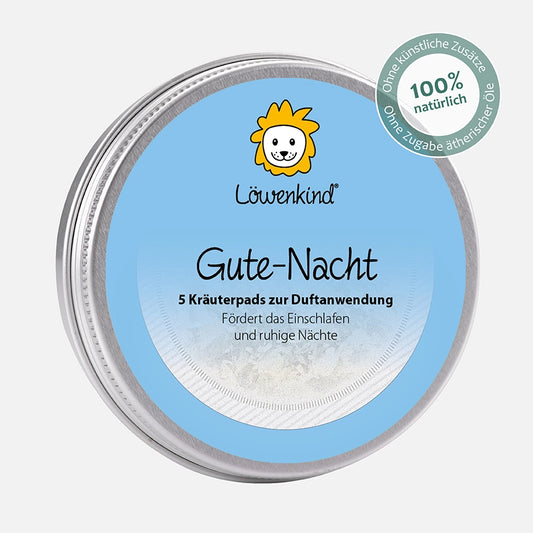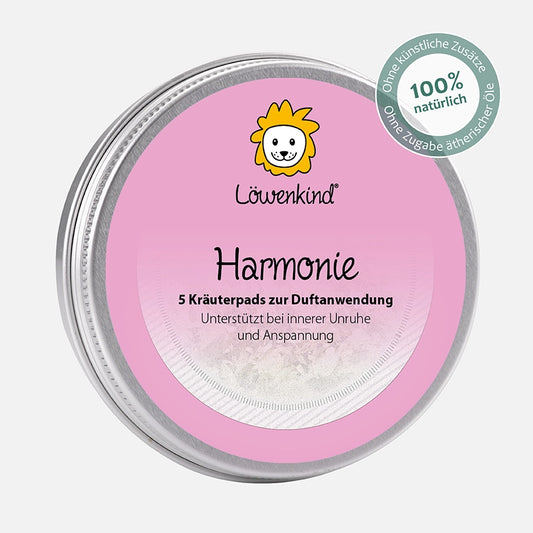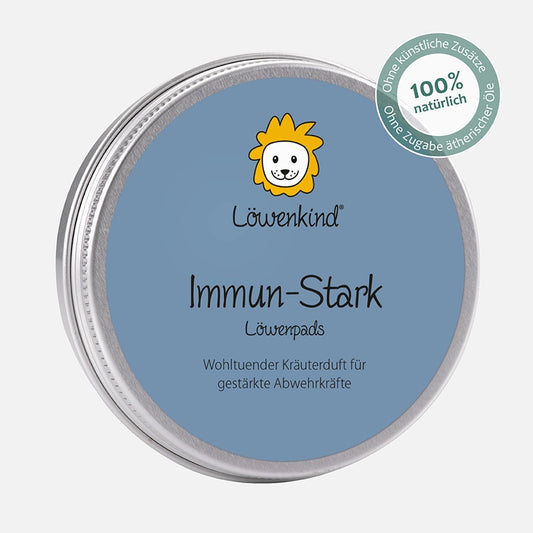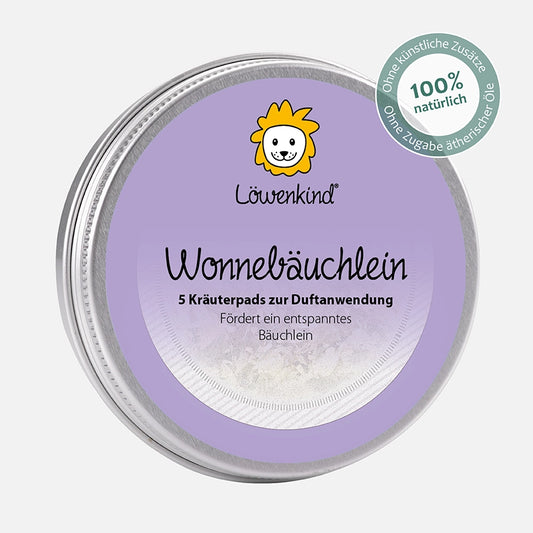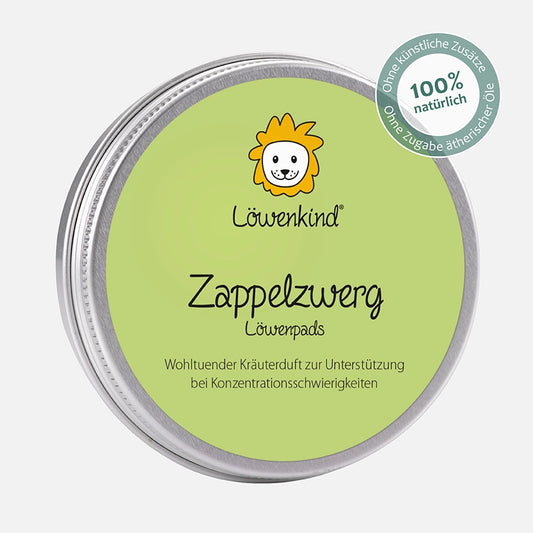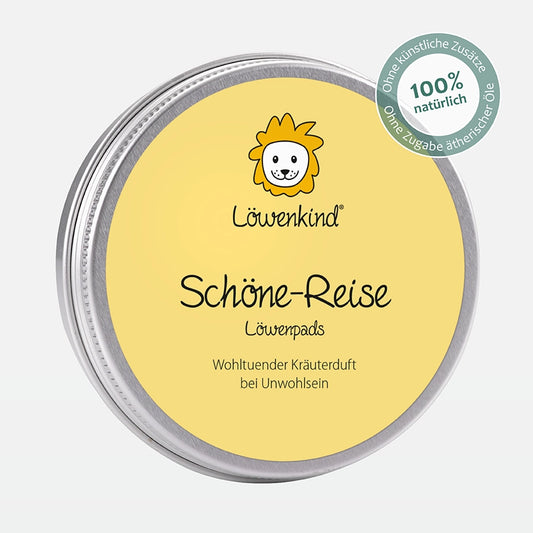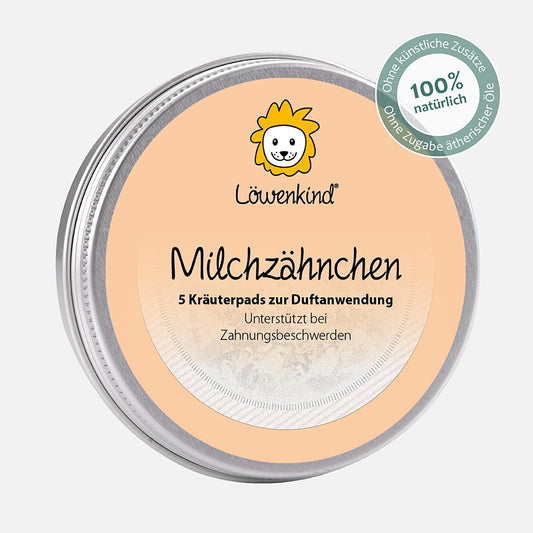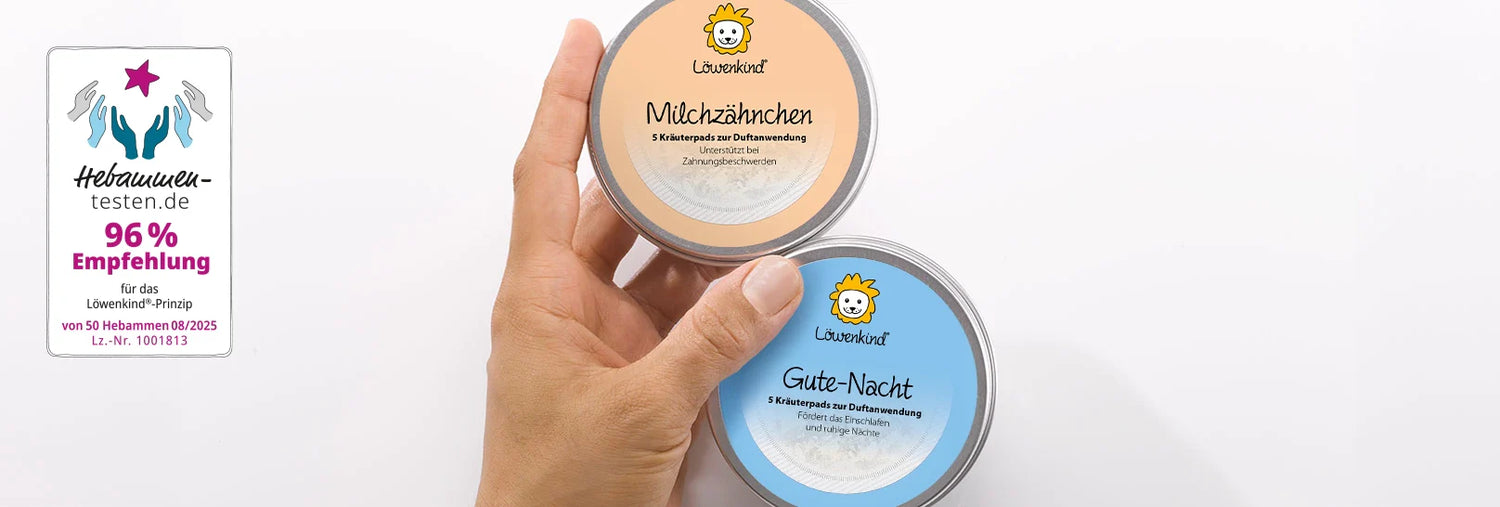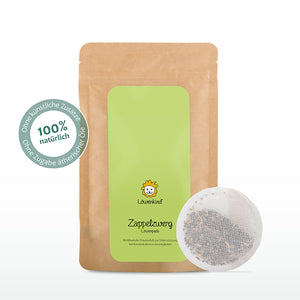"Honey, I think it's starting!" I said to my husband in bed around 7:30 a.m. That was exactly ten days before my due date. He replied, almost panicking, "Oh no, not today! I have important appointments at the office that I can't miss." As it turned out, he could, and since then, our baby has regularly turned our plans upside down.
Experience report by Anastasia H., 36 years old, management consultant, new mother
Who is this experience report on becoming a mother suitable for?
Dear readers, I'm Anastasia, 36 years old, and I became a mother for the first time about four months ago. In this blog post, I'd like to share my experiences with anyone who might be interested. I think it should be particularly relevant for pregnant women and new parents who are looking for guidance on what everyday life with a baby might look like.
I'm a management consultant myself and (yet 😊) not an expert in caring for babies and toddlers. However, I would have liked to have heard more authentic testimonials from "normal" parents to help me mentally prepare for what is now shaping my life. Simply to better prepare myself. That's also my motivation for putting the following down on paper. Please take what you find helpful and simply ignore what doesn't. With my testimonial, I'm not encouraging anyone to do the same.
Life turned upside down: Changes after birth
Where do I begin? It's not easy when you consider that my life, or rather our life, has undergone a truly radical change. Whether it's our days or nights, our hobbies or social life, sports or culture, nothing is the same as it used to be. Before the birth, this was exactly what my husband and I would never imagine. But I can reassure you, it feels much better than I expected. Perhaps we were simply mature at our relatively advanced age (my husband is 41), or perhaps this feeling is just a function of Mother Nature. All I can say to you is that you don't need to drive yourself crazy about this. It's a wonderful new phase of life that will feel right once it's here.
Follow your gut feeling: Well-intentioned advice and intuition
What you as parents will encounter again and again is well-intentioned advice from others. Be it in the family, on social media, at the supermarket checkout, or in a baby massage group. There are people everywhere who want to help you – usually with good intentions. This is often wonderful, but with today's abundance of information, it can sometimes lead to losing sight of what's important and losing your own intuition. This is probably my most important advice to anyone going through this for the first time: When dealing with your baby, give your own intuition a very high priority. And only take advice from people you really trust and who you would ask for advice yourself.
Parents in focus: Suddenly under observation
"The baby has been crying the whole time, why isn't the mother reacting?", "The child is dressed way too warmly, why don't the parents notice?" – The supermarket checkout mentioned above is a good example of when one's own behavior is suddenly observed and judged by others. For me personally, this is a new situation, one that is very unfamiliar, almost like being a celebrity. Until now, I was always able to "hide" in public when I didn't want attention. That time is now over. As a mother with a child, you are noticed out there, whether you want it or not. Perhaps this is because society sees the well-being of children as a collective responsibility, perhaps because everyone feels an emotional connection to these sweet little beings. Whatever the reason, every new parent must accept this immutable fact and learn to deal with it. My husband and I are still in the middle of this process.
Birth: An avoidable shock
My husband would have been so happy if he'd known before the birth what a baby's head would look like immediately after birth. We had a natural or "normal" birth, although it was rare that our daughter was a so-called stargazer. This happens in about one in every hundred births. "Normally," babies look toward their bottoms during birth. Stargazers, as the name suggests, look toward the sky. In any case, such a birth is longer and more stressful for both mother and child. The point I want to make, however, is what this special birth does to a child's skull. Since the skull plates in newborns are not yet solid, they shift when pushed through the birth canal. This leads to babies having a deformed skull immediately after birth. With stargazers, this sometimes looks particularly "wild." This was the case with our little one. My husband was so shocked that he started googling practically immediately after the birth, still in the delivery room. For a while, he thought he was going to have to raise a conehead (hello to the 90s!). Luckily, his research quickly turned out to be a good one and he discovered: everything was normal! As if by magic, the skull plates sorted themselves out over the next few hours, and our baby's head looked completely normal.
Upon closer inspection the next day, my husband noticed something else suspicious. Our baby was very hairy—especially on her upper arms and back. Anyone who has done some research beforehand knows that this is lanugo hair, which babies lose in the first few weeks. My husband, however, hadn't done any research and was already having unnecessary mental images again.
Rapid growth in the first few months
Our little one's subsequent physical development was impressive. She was born ten days early and was initially relatively small (49 cm, 3.2 kg) – which, incidentally, helped her be born as a stargazer! And so, the first few weeks were marked by the feeling of having to care for a very fragile creature, one that was best handled with kid gloves. The photos from this seemingly long-gone era are incredible: She was simply so tiny!
But over the weeks, things took a complete turn. Thanks to breast milk and our love 😊, she grew and thrived relentlessly in the weeks that followed. Today, after just over four months, she is 64 cm and weighs 7.8 kg. According to the usual tables, she is now one of the tallest and heaviest baby girls! Since both are Baby XL measurements, the doctors don't see this as a problem. Nevertheless, we always feel a bit strange these days when, for example, we meet a mother with an eight-month-old baby boy in a café and our little one is visibly fuller. That's just how it is. And as my grandmother always said: "It will grow out of it!"
Breastfeeding and pain: tips for getting started
I can't tell you how grateful I am that breastfeeding has been going so well so far. My little one was a little hesitant in the first few days, but after that, things went smoothly for her. I know from my friends that we can consider ourselves very lucky in that regard. As for me, my nipples were quite sore at first. Luckily, my wonderful midwife recommended something that worked wonders for me: silver nipple shields and compresses (for sore nipples). Both were my constant companions for a long time. Since I have (almost) no problems at all anymore, I no longer need these two aids. I am saying this at a time when my daughter doesn't have any teeth yet.
Everyday life with a baby: good mood in the morning, demanding in the evening
Today, after a good four months as a family of three, despite all the changes, all the leaps and bounds, a certain routine has returned to our lives. Yes, the baby often demands my full attention, and yes, there isn't much "me time" left for me as a mother. My husband has long since gone back to work, and I'm left alone at home until he comes home in the evening. During these hours, our baby always goes through the same emotional cycle. Until early afternoon, she is generally easy to care for and in a good mood. I can lay her on a blanket, and she occupies herself with her own hands, toys, and her surroundings, and is happy with that. I breastfeed her every two to three hours, and in between, I have the opportunity to take care of the important household chores. At some point in the afternoon, however, the wind changes. She then needs much more closeness, wants to be carried around, and sometimes cries for no apparent reason. Her joy then returns briefly when Dad comes home and she can spend another half hour with him. After that, our evening routine usually begins. Once the little one is asleep, my husband and I can spend some time together. Admittedly, we're both often so exhausted that we just curl up in front of the TV and nothing much happens.
Understanding and dealing with baby crying
What has become a constant companion in our daily life since birth is our baby's crying and screaming. In the first few months, a baby can't yet communicate what it needs, and it often feels like it doesn't always know exactly what it needs. However, if it doesn't get what it needs, it always means a small "end of the world" for the baby. That was a thought our midwife passed on to me, and one I always try to keep in mind in these moments. Because if the world were to end, I would start screaming, too.
In addition to baby crying triggered by a deficiency, there is also baby crying as part of a coping process. For example, when a baby is processing what it has recently experienced that day. This kind of crying is often particularly heartbreaking. The trick as a parent is to distinguish the former from the latter. For example, "Can I do something about it?" or "Can I just comfort the baby right now?"
In my opinion, the right attitude is crucial in any case. This should be a combination of calmness, patience, and lots and lots of love. That's easier said than done, because babies are loud and often scream and yell for several minutes at a time. It's important to keep your cool in this unfamiliar situation.
Baby sounds – are they actually speaking?
By the way, there's an intriguing theory by Australian Priscilla Dunstan, who claims that there are five universal baby sounds with a fixed meaning (Neh, Eair, Eh, Owh, and Heh). I won't repeat the explanation here, as the internet is full of them. We tried in vain for a long time to recreate these sounds in our daughter because we desperately wanted to understand what was troubling her at any given moment. However, we were able to decipher one of the sounds: "Neh" is what our little one actually calls when she's hungry. So it's definitely worth taking a closer look at Ms. Dunstan's theory.
Slowing down at the baby pace
A topic that's discussed far too little is the speed at which babies go about their daily lives. Babies are truly incredibly slow compared to us "rushed" adults. And anyone who initially had the attitude of "the baby has to adapt to my life!" will probably find that this isn't so easy to implement. Babies are, in fact, the ideal new life partner for a slow-paced lifestyle 😊. So, whoever will be caring for your child during the day, don't plan too much for each day!
Changing diapers and first considerations about sustainability
There's a lot to be said about diapers, of course. We briefly considered using reusable diapers. My husband had heard about it at a trade fair and was convinced by the sustainability aspect. Ultimately, however, we decided to start with conventional diapers and then see what we wanted to do. My interim conclusion is: We could have actually worked with washable diapers for the first four months, as our little one only has a big wet in her diaper on average once a week (you read that right: weekly. And yes, that's within the normal range). Furthermore, a diaper only has a very subtle smell until we start solids. That means it would have been possible and probably sensible up until this point. But since we're practically just around the corner and things will certainly be completely different then, we don't want to switch anymore.
We currently use about four diapers per day. We use a special diaper bin, which is practical and recommended. However, it won't really prove its worth until solid foods begin. Either way, the piles of diapers are already considerable and make up a significant portion of our household waste.
Holding as a supplement to diapers brings a decisive advantage
Our midwife, by the way, is a big fan of holding the baby. This means paying attention to your baby's signals and then holding them over the sink or toilet to "evacuate." We actually practiced this successfully for a while, and our little one took it very well. In the sense that she at least peed whenever we held her over our bathroom sink. This has the huge advantage that we could then always clean her intimate area straight away, and she has hardly ever been sore there. However, we combined our holding the baby routine with the use of diapers, primarily for safety reasons. Over time, our baby's signals became less clear, and her emptying rhythm became increasingly irregular. At some point, without actively deciding to do so, we simply stopped holding the baby. Currently, we're doing very well without holding the baby.
The first conscious smile – a moment full of magic
I don't remember exactly when it was, but sometime in her second month of life, our little one began to smile consciously. Since then, this has meant that she smiles back when we smile at her and she feels good at the same time. You can also conjure up a smile with other little games and shared activities. This happens quite often and is simply unbelievably beautiful. It's like nature is saying to you: "You're doing everything right! You're a fabulous mother!" It goes down like a treat, as you can imagine. It now makes my husband and I release happy hormones every day.
Before this first conscious smile, there had been occasional smiles. However, I've read that this happens unconsciously and doesn't really mean anything. Conscious smiles are so important for us as parents because they finally give us direct feedback. Ultimately, we parents provide a kind of service for our little ones, and in this business, good service is paid for with smiles 😊.
Sleep rhythms and the importance of the evening routine
The key to a happy family life, of course, is ensuring everyone gets their well-deserved sleep. That's easier said than done.
My husband has to work on weekdays and understandably needs several hours of sleep at a time. He also can't breastfeed, so he usually can't really help at night. Therefore, I've agreed with him that he can move to the living room couch if necessary.
The baby slept a lot in the first few weeks. Both day and night, often for several hours at a time. At some point, this changed, and she had an irregular rhythm with significantly shorter sleep phases. At first, we didn't know what to base our sleep on. But since then, we've learned that we can base our sleep on the fact that she can only be awake for a maximum of two hours. So, during the day, we don't base our sleep on the clock or the position of the sun, but rather on how long she's been awake. We can also tell very well whether she wants to sleep by whether her eyes are glazed over or whether she starts to fuss. If this combination occurs during the day, it's time to go to the bedroom and darken the room, because she definitely wants to sleep now.
For the past few weeks, we've been trying to establish a consistent evening routine that fits with our daily routine. We've established an evening routine, in which the Goodnight Lion Pads play an important role. Other routine components include changing diapers, changing clothes, saying "goodnight" to Dad, rocking, singing, and putting her in the hammock. It's currently working very well. Once my little one falls asleep in the evening, she usually "only" wakes me up 2-3 times during the night. Most of the time, she wants to be breastfed.
For the time being, I'm the last link in this family sleep pecking order. It took me a while to come to terms with it. As long as the child is breastfed, though, it admittedly makes little sense to make my husband suffer unnecessarily. He should conserve his energy and help the baby and me elsewhere. For example, I enjoy my evening back massages 😉.
Besides that, luckily, in my role as a mother, I can get by on a little less sleep than usual. That's why I'm usually fit during the day and don't just wander through the day like a zombie. There are exceptions to the rule.
The cradle: support for falling asleep
In the second month we bought a cradle with a motor. The model we use requires a fairly large open space in the bedroom, which we fortunately have. We are also lucky that our baby loves the cradle, as several friends have told us that their baby rejects the cradle. For us, the cradle has become a really important companion WHEN it comes to falling asleep. In the first few weeks a baby has to learn to fall asleep on its own. They usually can't and then despair when they are tired. At least that is the case with our baby, and we have to actively rock them to sleep. As that can be extremely exhausting, and our baby tries to fall asleep about 6-8 times throughout the day, we are grateful that we can also passively rock them to sleep using the cradle. This has been a huge help to us so far.

The side bed as storage
I consciously decided early on to get a cot bed and got it first out of all my baby accessories. It seemed logical to me: I can have my baby close to me and can bring her in to breastfeed at night without having to get up. That was the theory, though. So far, our baby hasn't been having any fun with it, and our cot bed is slowly but surely becoming too small. Our baby now usually falls asleep in the hammock and then moves straight into bed with me during the night. My baby simply won't accept anything other than sleeping right next to me after being breastfed at night. But I still wouldn't want to be without the cot bed. It's a great place to rest her head and I'm not worried about my baby falling out of bed at night.
Baby essentials: new or used?
First of all, you could buy countless things for each baby phase. This is especially tempting when the baby isn't here yet, because the anticipation is so great. But what's actually needed often only becomes clear once the baby is born. And from what I've heard from people around me, this is quite different for every family. Each baby phase is also relatively short. In the interest of sustainability and to save your wallet, it makes sense to buy as much secondhand as possible.
I would definitely buy the following new:
- Baby seat for the car (for safety reasons)
We bought or borrowed the following items second-hand and are happy with them:
- Changing table
- baby carrier
- heat lamp
- Extra bed
- stroller
- Hammock
- bassinet
- Most clothing
Health in the first months: illnesses and minor ailments
We were spared from any major illnesses in the first four months – thank God…
- no stuffy nose,
- no cold,
- no cough,
- no fever,
- no flu,
- and no other symptoms of illness that lasted for a longer period of time.
What we suspected, however, were brief gastrointestinal infections, as she occasionally had greenish diarrhea. These cleared up after a maximum of two days, and our baby's well-being was not affected.
However, the absence of illness does not mean the absence of any discomfort. She certainly had to struggle with...
- the 3-month colic,
- the general physical changes including their rapid growth,
- the processing of new impressions.
This was all within the normal range, but it also caused us, as a young family, a lot of worry and distress. Teething hadn't been an issue up to this point, by the way. That will likely change in the coming weeks.
Starting complementary feeding: The next step in baby's everyday life
Now, after four months, the doctors say it's time to start solids. It should begin by six months at the latest. Accordingly, I'm currently considering how best to approach this. I'm quite respectful of this new phase. On the one hand, I still remember the challenges of three-month colic all too well, or rather, not so well. On the other hand, I know that diapers will be a completely different story. To get the digestive juices flowing, I've started using the Wonnebäuchlein Löwenpads regularly again.
Bathing and personal hygiene for babies
We bathe our baby about once a week because it's a good rhythm. My husband's colleagues gave us a premium tub that allows us to bathe her standing up. This makes it very comfortable for me. For our little one, bathing is often a celebration, something she practically celebrates. Recently, she's even started splashing around with joy. Sometimes, though, she finds it unpleasant and wants to get out of the water as quickly as possible.
I've already described above the advantages of holding a child over the sink. This allows them to clean their intimate area directly after using the toilet, and their bottom remains free of sore spots.
Going out with a baby: Our first experiences and tips
When can I go out with the baby? With a young baby, activities outside of the home should be kept to a minimum. This applies for at least the first three months, even if you're at risk of going crazy. Why do I say that so firmly? I say that because we ourselves underestimated the potential for it and once made a really bad mistake. When our baby was four weeks old, we went to a town festival. It started out as a very relaxed event, which she would have easily participated in. However, we missed the moment when the festival grounds became more and more crowded, and then suddenly groups of drummers marched past us. It was far too loud and crowded for the little creature. Unfortunately, it was already too late when we realized this. Our baby cried terribly for a long time, and we were worried for several days that she had suffered trauma. Since she's doing well today, we don't think there's any lasting impact. We definitely wouldn't do it again.
My husband and I are now going out again. Usually, though, it's just one of us, so the other can stay home with the baby. When I go out, I pump milk in advance, which my husband can then give to her. Fortunately, this works very well. Going out regularly is important to me for my own spiritual well-being.
Choosing and putting on baby clothes correctly
Dressing a baby properly isn't easy. My friends advise me to always dress the baby one layer more than myself. Hospital staff strongly urged me to dress babies too coolly rather than too warmly, because they overheat so quickly. In short, everyone seems to say something different.
We've gotten into the habit of doing this based on intuition. That is, what feels right to us given the temperature. To check, we regularly touch the back of her neck. This makes it easy to tell whether it's too warm or too cold for the baby. This simple method works very well for us.
The role of the postnatal midwife
There are two main areas of work for midwives. One focuses on the hours directly during childbirth. The other covers prenatal and postnatal care. All midwives have the same training. Many midwives then specialize in one of these two areas.
I'd like to briefly mention our postnatal midwife, who provided us with incredibly good service during the first few weeks. At first, she came by every day for about half an hour. She weighed and examined the little one. We were also able to ask any questions we had. We had always compiled a list of them before her arrival and then discussed them with her. This was absolutely essential for us. Over time, the visits became less frequent. Eventually, we had learned the most important points. Her support was over about six weeks after the birth.
Because a postnatal midwife is so essential and unfortunately not a given, you should seek one early on. We had the challenge of moving to another city shortly before our daughter's birth. This made the search for a midwife incredibly difficult. But thanks to our persistence, we were rewarded with the luck of the hard-working and wonderful midwife we found.
Physical recovery after birth and baby blues
One of the concerns every pregnant woman has is, of course, whether her body will be able to cope well with pregnancy and childbirth. This is certainly individual and cannot be influenced at will. My body has recovered well after four months, even though my postnatal exercise course doesn't start until next month. I compensate for this to a certain extent at home with exercises I find online. Breastfeeding also means that my little "Dracula" is literally draining me dry. So, despite eating a lot, I always feel like I'm in a small calorie deficit, which makes me slim. The birth injuries in my intimate area have also almost completely healed. I don't have any pain when urinating or having sex.
The hormonal whirlwind immediately after birth is not to be underestimated. For the first three days, I was absolutely intoxicated, filled with an all-pervading feeling of happiness and love. Not just for my child, but also for my husband, the midwife, my in-laws, and everyone else I met during those days. This euphoria was then followed by the infamous baby blues, which caused me to shed many tears. When my husband left for a two-day business trip two weeks after the birth, I burst into tears.
Outlook on the next phase
I hope I was able to help you a little with the topics I've discussed. Every family story and every child is unique. But sometimes it helps to simply read how "normal people" are dealing with this new situation. Social media often only tells half the truth.
Our daughter is increasingly gaining a voice and squeals, sings, and hisses happily all day long (my husband affectionately calls her his little dragon). This heralds the next phase, and I'm very excited to see what it will bring. I, and we as a couple, are incredibly happy with the first four months. Things couldn't have gone much better for us personally, and we are truly inspired every day by the joy of having created something so beautiful. But we know that this isn't a given, and there's no guarantee it will stay this way.
My most important tips are now briefly summarized for you.
My 5 top tips for women who are pregnant for the first time
- Get a postnatal midwife early! In my opinion, the ideal time for this is from the twelfth week of pregnancy onward.
- When it comes to nest building, less is often more. Aside from the basics, you'll know what you need when the time comes. And you can usually get these missing items super quickly.
- Discuss your expectations, fears, and wishes with your husband beforehand regarding the birth and your time together as a family. Be as specific and detailed as possible. This will help both of you immensely.
- Write a birth plan. In it, you'll outline for the midwife what's important to you during the birth and what you don't want to do. Templates for this are available online. I'm realizing, especially now, in discussions with other mothers, how important a self-determined birth is.
- Enjoy some alone time during your maternity leave before the birth! Order your favorite meal again, put your feet up, and binge-watch a series. Because you won't be able to put your feet up and do nothing for hours on end anymore 😊
My 5 top tips for new parents
- Plan very few activities at the beginning. Babies overstimulate very easily, and you'll always pay the price in the evening. It's almost never worth it.
- When dealing with your baby, give your own intuition a high priority. Only take advice from people you would ask for advice yourself.
- Babies sometimes just want to cry and scream. If you've met all of their needs and they're still crying, focus on comforting them. Hold them close to your breast to provide as much physical contact as possible. Don't try to interrupt them or silence them with a pacifier during this time, but let them know that you're listening.
- Rent a motorized cradle before purchasing one. The initial cost is quite high, but once your child embraces it, it's worth every penny. Some specialty stores offer rental models specifically for this purpose.
- The lack of sleep and the initial uncertainty often take their toll on our moods – for us mothers, but also for the fathers. Try not to take this understandable frustration out on each other, because you're a team.

